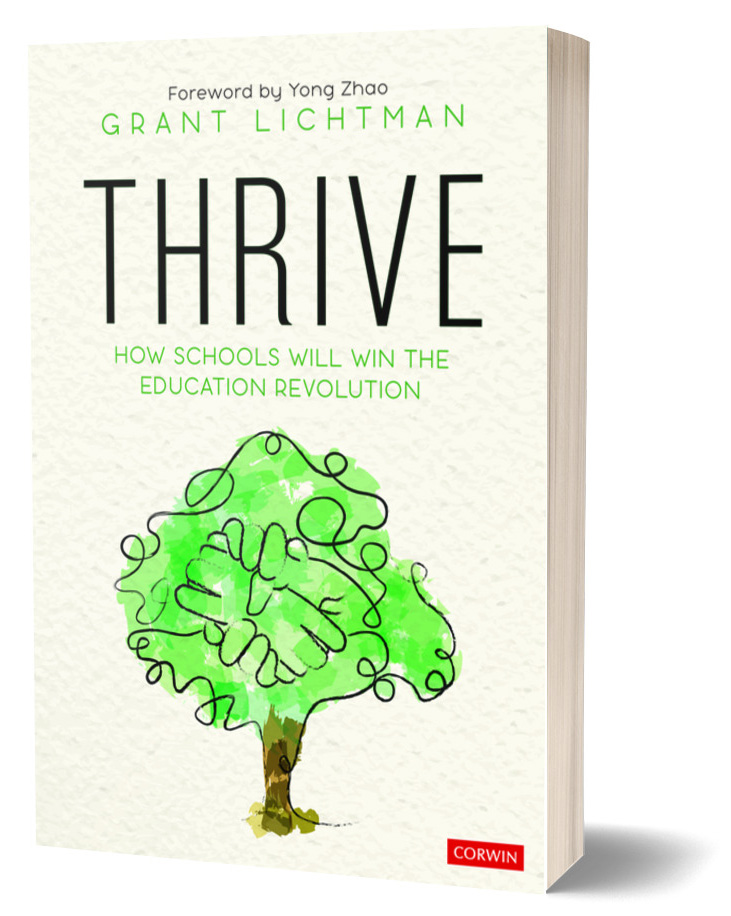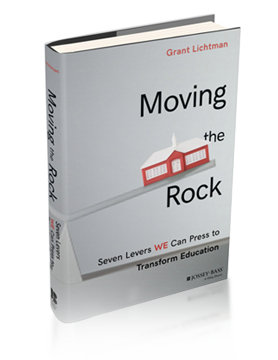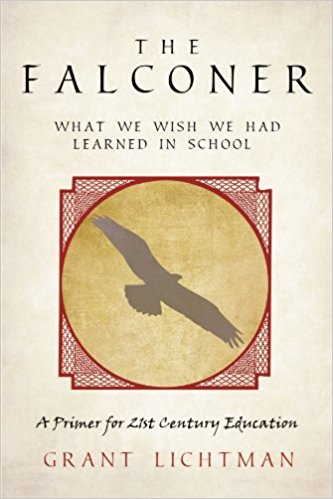 What is the value of a school? What will it be in the future, for your school? Are we anywhere in the ballpark on this discussion?
What is the value of a school? What will it be in the future, for your school? Are we anywhere in the ballpark on this discussion?
We should always pay attention to ideas at the margins of our own experience; this helps keep confirmation bias in check and brings fresh DNA into the pool of evolutionary ideas. That’s why I think The Inevitable, by Kevin Kelley is such an important read for educators. As Kelley looks into the near future, he sees that a key characteristic of the exploding cognitosphere is the ability to create, recombine, and spread copies of almost anything, and he asks, if we can copy almost anything on a whim, “where does value really lie?” Trust is one commodity that is hard to copy, says Kelley, that will retain value even as bits of digital knowledge are copied, recombined, and shared:
There are a number of other qualities similar to trust that are difficult to copy and thus become valuable in this cloud economy. The best way to see them is to start with a simple question: Why would anyone ever pay for something they could get for free? And when they pay for something they could get for free, what are they purchasing?
These uncopyable values are things that are “better than free.” Free is good, but these are better since you’ll pay for them. I call these qualities “generatives.” A generative value is a quality or attribute that must be generated at the time of the transaction. A generative thing cannot be copied, cloned, stored, and warehoused.
Of Kelley’s eight “generatives” that he believes are better than free, I find at least six are innovation and growth opportunities for K-12 transformation. He frames these as ways to enhance product value. I would argue they are ways to enhance or preserve the value of a school. The names of the “generatives” are his; the commentary is mine.
Immediacy: In times of increasingly rapid change, the “shelf life” of many things, including much of what in the past has been accepted knowledge, decreases every day. And, as technology grows ever more efficient, our patience for delays, our willingness to wait, also decreases. These may frustrate those of us who pine for a slower pace in our lives, but they are both inevitable, and neither is likely to reverse. How well positioned is your school to bring ‘the immediate’ into your learning conversations?
Personalization: Nearly every educator I know believes that learning is both transactional and relational, and of the two, the relational is more important for deeper learning to occur. Personalized relationships cannot be cloned or copied. They are the value of a system of human-centered education that is most likely to survive at least the next several decades of massive growth of artificial intelligences. How will your school preserve personalized learning in an ecosystem of increasing virtualization?
Interpretation: This may be our most important human differentiator, at least for now. Interpretation involves nuance, individuality, and perspective. By definition they are not copies; each time we play a song or view a painting, we have the opportunity to create a “new” version through our own interpretation. How does your school enhance students’ abilities to filter, synthesize, and interpret the waterfall of information they encounter every day?
Authenticity: We place great value on the original. We can copy a book, a piece of music, or an idea, but humans want to know “who came up with it first”? We want to learn from someone who created a new idea more than we want to learn from someone who is merely parroting ideas of others. (I would rather, for example, have Kevin Kelley than Grant Lichtman come talk to my school about “generatives”!) How is your school creating pathways for students and teachers to interact with authentic creators, as opposed to mere copiers?
Accessibility: What we can’t find has little value, and knowledge is now stored in an exponentially growing archive. Ideas, facts, amd creations are increasingly lost in this archive unless we have powerful ways to find them. In education, accessibility has traditionally been most restricted by time and budget: we don’t have the time or money to get on airplanes and go to conferences to meet with people or to do research. Going forward accessibility will be limited only be the skills we each have to reach out virtually to the places where knowledge resides. How is your school positioning resources and developing skills to ensure that your learners have access to to what they need, when they need it?
Embodiment: A virtual world frightens educators; we want to discriminate between what is real and what is not. We can envision a future when the volleyball team might play a virtual game against another team just like video gamers do today. But there will be increasing value in playing the real game against real people; in sitting down with a person in the flesh rather than seeing them through a headset; in a morning hug at the classroom door. How is your school planning for the near-future when much of the traditional learning experience is available via a VR headset or the AI-enabled device on the bookshelf?
Are these terms hard to understand? To place in context of your school? Uncommon at faculty meetings or parent coffees? Probably so. But they are real currency in a world of differentiated value, and that is the world that increasingly faces our K-12 schools. We can ignore them since they don’t fit nicely into our existing worldview. Or we can explore them, looking for opportunities to excel, grow, and differentiate. In a time of evolution, it is pretty clear which path leads to success and which to potential extinction.












Leave A Comment